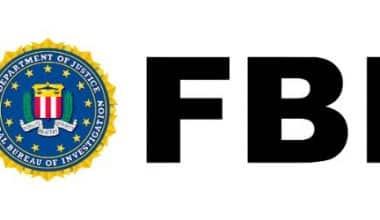In order to run a successful business, you need a logo that will help you stand out from your competitors. A logo is a visual representation of your company, and it should be easy for customers to identify your company.
You need to consider several factors when designing your logo, including:
- Where will you use the logo, and how will it be used?
- Will the logo need to be altered or modified in the future?
- What type of logo do you want?
Starting With The Name Of Your Company Or Business
The first step in designing a logo is to decide what your company or business is called. This can be tricky because many business names already exist and you’re not allowed to use them.
For example, if you’re starting a new clothing store, you can’t use the name of a well-known chain or department store. You also can’t use the name of a well-known brand or product name. You could end up infringing on another company’s trademark.
If you’ve got a great name, this could be the perfect opportunity to use it. If you don’t have a name yet, consider brainstorming some ideas for a company name. You can even go online and look for other businesses with similar names.
Choosing A Design, Style, And Color Scheme
Once you have a name for your company or business, the next step is to choose what type of logo you want to create. There are several different types of logos you can choose from, including:
- Wordmark: The wordmark logo includes a word or words that represent your business or product. This logo is typically used on all business stationary and advertising, such as a letterhead or business card.
- Logotype: A logotype is a word or phrase that is often used in place of a wordmark. It can include your company’s name, your company’s slogan, and other text or symbols.
- Symbol: A symbol is typically used on business stationery or advertising to represent your business. It could be a logo or other symbol that represents your company.
- Wordmark + Symbol: This combination logo includes both the wordmark and the symbol on your business stationery or advertising.
You also can choose from different styles and colors for your logo design. For example, you can use an all-caps design, a sans-serif font, and a serif font for your company logo. You can also choose from multiple color schemes, including black and white, red and white, and blue and white.
Using Your Company’s History To Help Define Its Look
Once you’ve chosen what design style and color scheme you want for your company logo, it’s time to start designing the logo. You can use your company’s history to help inspire the look of your logo. For example, if you run an antique store and your logo includes antique objects, that would be an excellent design idea.
You could also take inspiration from logos used by other companies in your industry. If you’re in the insurance industry, you could use an insurance symbol or other symbols of insurance companies like AIG or Allstate to create your own logo.
Using Symbols, Colors, and Fonts To Create An Identity
Once you’ve created an idea for your company logo, it’s time to start creating it. First, you need to decide on the type of symbol or another image you want to use for your company logo. For example:
#1. A symbol that represents your company:
If your company is named “Cherished Treasures,” this would be a good symbol to use for your company logo. You could include an antique item like a doll or dollhouse in the shape of an “H” with “Cherished Treasures” written across it in large letters. This would be an ideal way to incorporate your company’s history into the logo design process.
#2. A symbol that represents your company:
If your company was named “Cherished Treasures Antiques & Dolls,” this would be an ideal symbol to use for your company logo. You could include an antique dollhouse in the shape of an “H” with “Cherished Treasures Antiques & Dolls” written across it in large letters. This would be an ideal way to incorporate your company’s history into the logo design process.
Once you have decided on the type of symbol you want for your company logo.
You need to choose what color scheme best represents your company. For example:
#1. Red and Gold:
This combination of colors represents royalty and wealth, which is a good color combination for an antique store or any other business that sells expensive products and services.
#2. Red and Black:
This combination of colors represents power and authority, which is a good color combination for an antique store or any other business that sells expensive products and services.
Once you have chosen a color scheme that best represents your company or business.
It’s time to choose a font style and size for your company logo design. For example:
#1. A serif font:
A serif font is one that has small lines at the end of each letter or letter group. Examples of serif fonts include Arial and Times New Roman. Serif fonts are great for representing authority and power because they appear more formal than sans serif fonts such as Helvetica or Georgia.
#2. A sans serif font:
A sans-serif font is one without small lines at the end of each letter or letter group. Examples of sans serif fonts include Arial and Verdana. Sans serif fonts are great for representing wealth because they look more modern than serif fonts such as Times New Roman.
Once you have chosen the font style and size for your company logo.
It’s time to add detail to the design by adding color and text information. For example:
#1. Color:
Color can help create depth in your logo design by making the symbol or image stand out more on paper or on a computer screen. It also can help distinguish one object from another in your logo design so that customers know where they should focus when looking at it. You may want to add color to differentiate between text (such as “Cherished Treasures”) and background (such as “Antiques & Dolls”). You also may want to add color to differentiate between certain parts of the design (such as letters) so that customers know where they should focus when looking at it.
#2. Text:
In addition to adding color to distinguish between different parts of the design, you can add text information such as the name of your business or product to make the logo more recognizable as well as more professional looking when displayed on paper or on a computer screen.
Once you have designed the logo for your business or business card, it’s time to print it out so that you can start using it in marketing materials and branded merchandise such as business stationery and advertising materials like letterheads and postcards. You can also print out some sample copies of these materials so that other people can see how they will look when printed out on paper or displayed on a computer screen before they are printed out on paper or displayed on a computer screen.
Logo design is an important part of branding your business. By following these simple steps, you can create a logo that will represent your company and help you to reach new customers.






